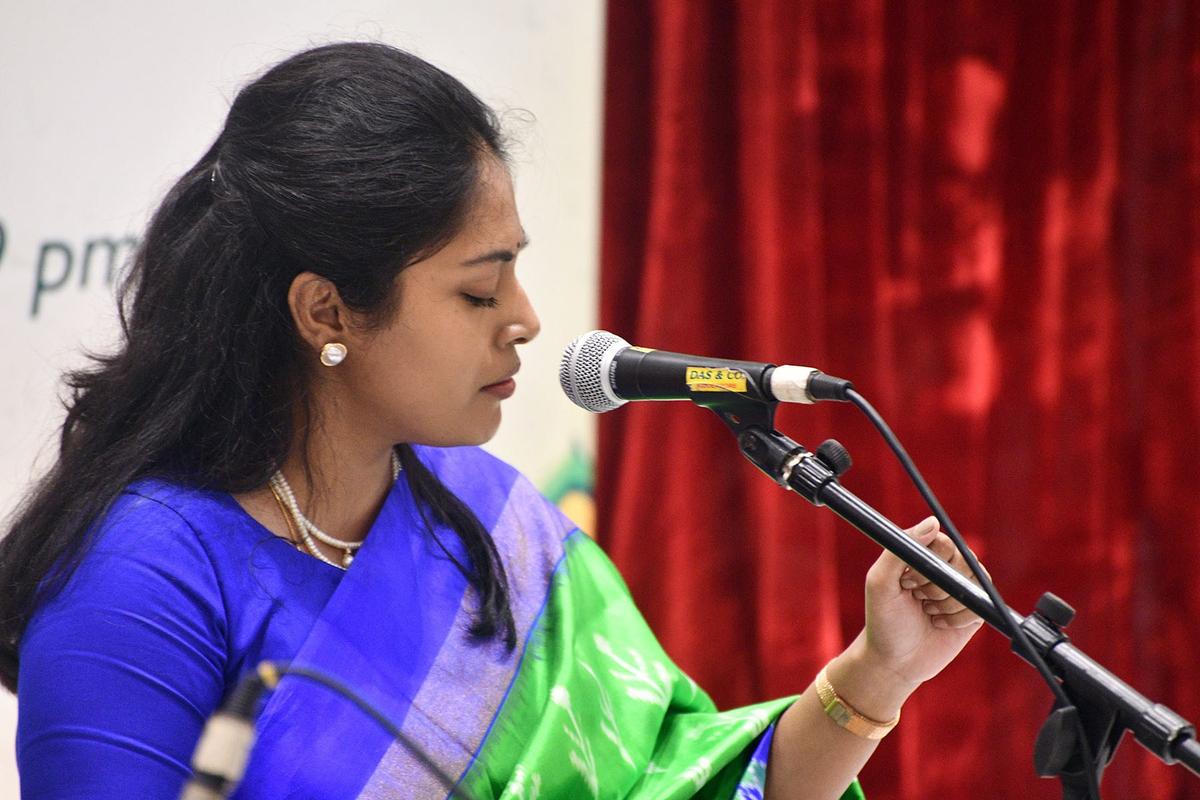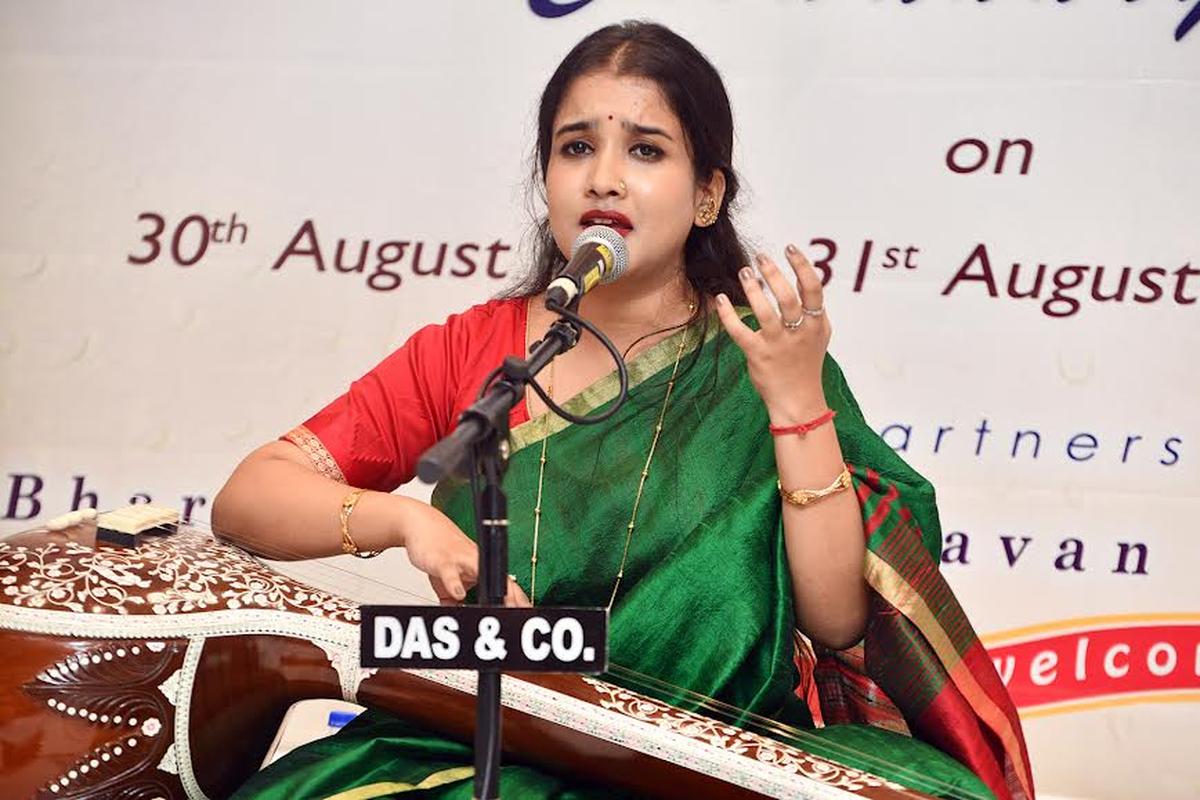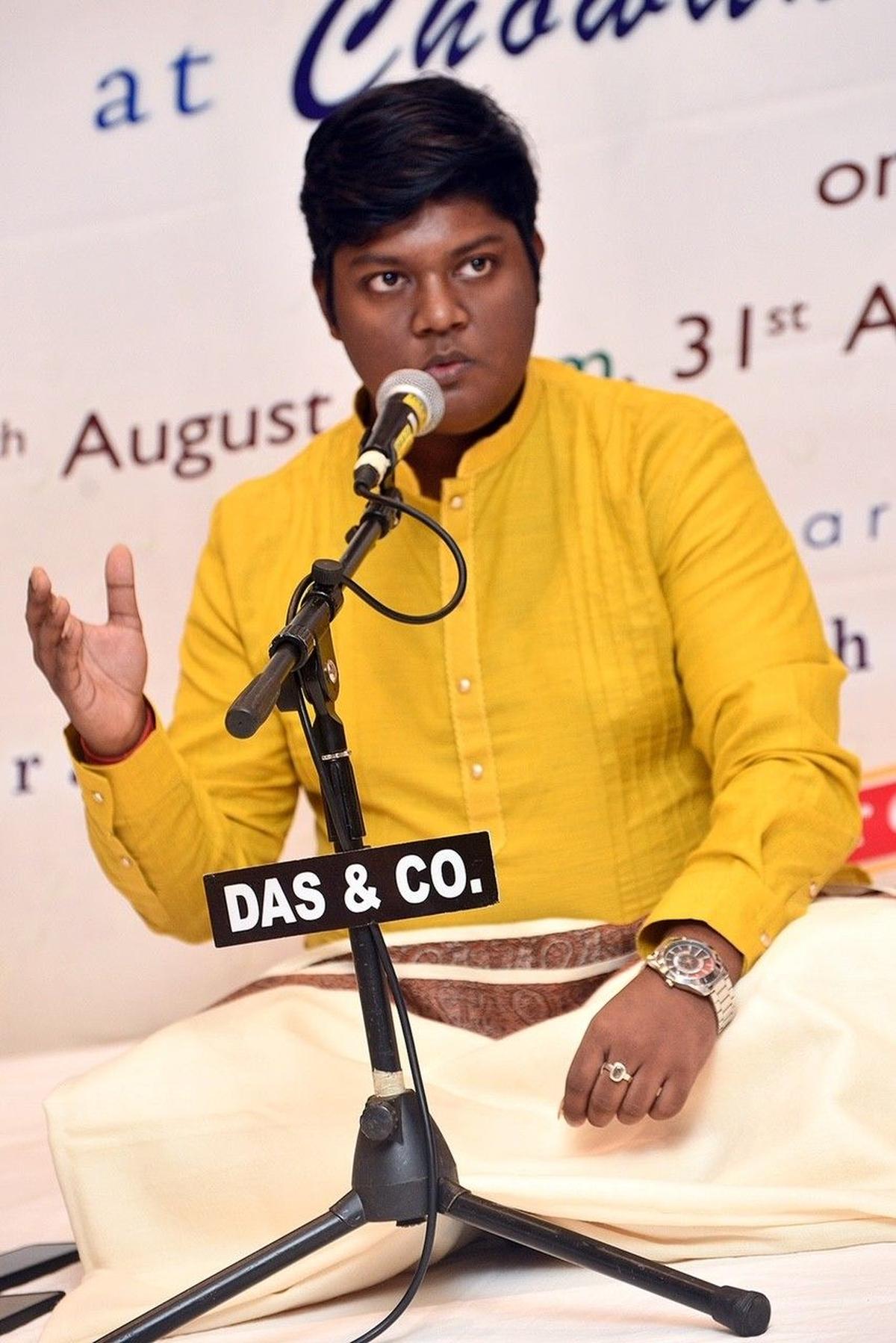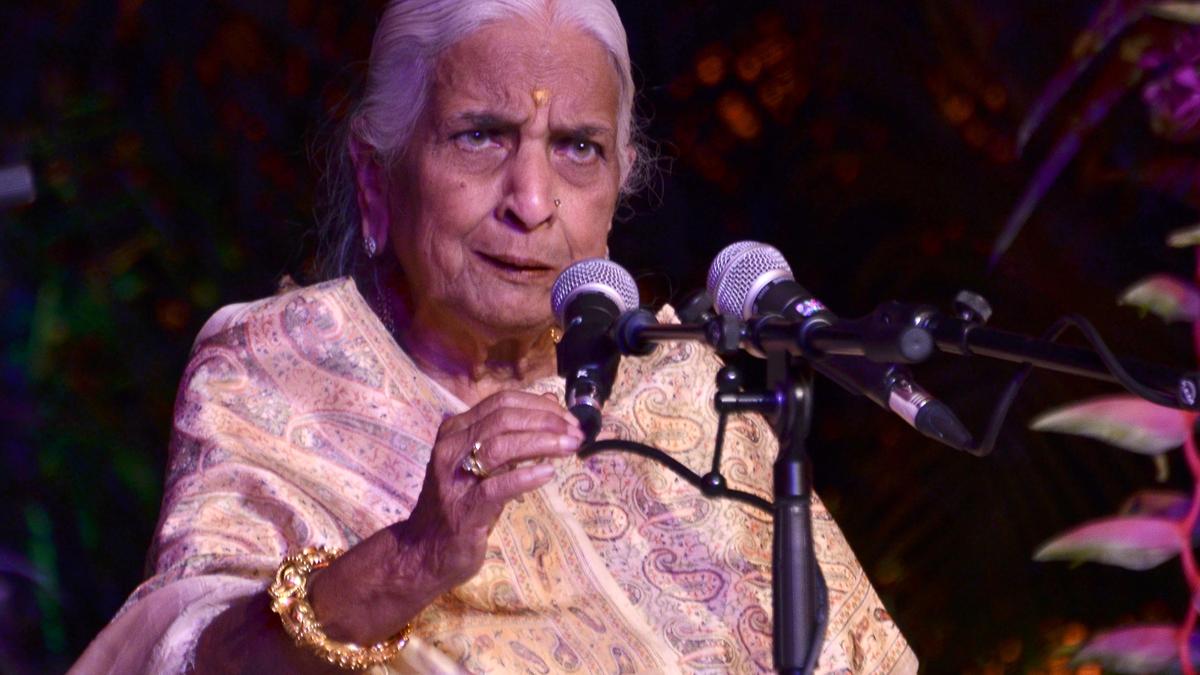At a time when Bengal is crying out ‘we want justice’ against atrocities on women, one cannot help but think of professional female singers who were stigmatised as courtesans or baijis for centuries until the early 1950s. These original custodians of Hindustani music, including classical dhrupad, dhamar, khayal, etc., remained popularly associated with thumri even after independence. Thumri declined along with the marginalisation of its accomplished performers, as long as Indian government policies remained gripped by the double standards of the Victorian value framework.
A recent ‘Barkhaa Bahaar’ session featuring thumri, kajri, jhula and tappa styles saw many young singers turn up as eager participants and spectators, as if to avenge the pain and desperation of those heroines. The two-day event was presented by Aniruddha Choudhury’s organisation, the Calcutta Performing Arts Foundation, and supported by Bharatiya Vidya Bhavan.
In general, thumri and related styles are still practised in Bengal, thanks to the efforts of veteran musicians like Girija Shankar Chakravarti, Prasoon and Meera Banerjee, Girija Devi, Shipra Bose and Purnima Choudhury. Yet, many of these styles, which have all the riches of the indigenous charm of the folk music of the Ganges-Yamuna region, are now either being distorted or fading away.
In 2011, two years before Purnima Chowdhury’s untimely demise, a series of Purab Ang Gayaki Utsav was held in various cities of India. It was organized by Vinod Kapoor, a music loving businessman from Gurugram. Vinod Kapoor, the man behind the revival of PAG says, “VSK Baithak took the initiative to rescue this gayaki from the dark corner and bring it back to the center by giving this heritage a new name ‘Purab Ang Gayaki’ (PAG); and celebrated it through a series of baithaks held in Delhi, Varanasi and Kolkata.” And as part of the PAG festival, a festival called ‘Barkhaa Bahaar’ has been held in Kolkata to celebrate the monsoon.
These quarterly festivals were organised to evaluate selected artists from all over India and to encourage the participants by awarding the top three with the ‘Girija Devi Award’. According to Vinod Kapoor, he ‘discovered those singers of Bengal who had the most suitable qualities – sensitivity, voice quality and femininity – to effectively express the subtle emotions of this singing genre.’
Interestingly, all the awards were won by Bengalis till 2018. By then Appaji had passed away. Vinod Kapoor was saddened to see that the gold mine of PAG was bereft of gurus who could introduce students to the dialects, literature, lifestyle and culture of the Hindi belt. So he started the Purab Ang Gayaki project and assigned the noble task of disseminating the vidya to several learned gurus from across the country. But later narrowed it down to Vidushi Manju Sundaram from Banaras and Vidushi Dalia Rahut from Kolkata. They are grooming khayal and thumri artistes of varying calibre, enabling them to understand the meaning of a word that has layers of unexpressed emotions, bringing us closer to our roots, which serves as the lifeline of this rustic yet complex gayaki.
Celebration
Abanti Bhattacharjee performing at the Barkhaa Bahaar series, part of the Purva Ang Gayaki Utsav. | Photo courtesy: Prashant Arora
From these angles, the rustic beauty of Abanti Bhattacharjee’s charming ‘Piya To Manat Nahi’ (Kaafi) and the desolate ‘Tarpe Bin Balam’; and the singer-sitarist duo Debpriya-Samanvay’s intricate and rare tappa in Raag Poorvi followed by the rhythmic swing in Megh, stood out. The effortless free flow of Jhumpa Sarkar’s Pilu thumri ‘Saiyaan Nahi Aaye’ followed by the swaying swing was also distinct.
Santa Kundu’s Kafi-based Thumri, with rich lyrics describing the beauty of the rain-soaked divine couple, was soothing and she concluded with a passionate Mirzapuri Kajri. Bishnupriya Chakraborty’s traditional Thumri was followed by a Sohar, congratulating Nanda-Yashoda on the arrival of their child (Krishna). This became the only ritual song of the festival with Shivranjani and Deepchandi. They concluded with a wonderful talpherta from Kaharva to Dadra and back. Dipanjana Bose Chanda took it a notch higher by presenting a native Thumri and a rare swing for Rupak. Madhumita Chattopadhyay could not do justice to her melodious ideas due to a bad throat.
The PAG artists were accompanied by Ashok Mukherjee, Pran Gopal Bandopadhyay, Emon Sarkar, Pritam Poli and Arabinda Bhattacharya on tabla and Debashish Adhikari and young Dilip Biswas on harmonium. They also supported the young artists.

Deblina Ray’s Majh Khamaj was influenced by her guru. | Photo courtesy: Prashant Arora
youth brigade
Many young artists made their debut performances at the PAG festival. They performed in front of an audience made up of very senior musicians, peers and a diverse audience. The festival opened with Deblina Ray, a disciple of Vidushi Suranjana Bose, a scholar of the PAG project under Manju. Deblina expressed the joy of union and the pain of separation very sensitively in her two compositions, reminiscent of her grandmother Guruma’s style.

Moupali Choudhary embellished his chosen thumri and kajri with wonderful narration. | Photo courtesy: Prashant Arora
Vidushi Subhra Guha’s singing style came to the fore when her disciple Moupali Choudhary embellished her selected Thumris and Kajris with excellent recitation. Dalia’s young disciple Saagnik Sen, who is well versed in Patiala’s Khayal singing, sang a Desh Thumri and a Kajri composed by Appaji. His adherence to PAG’s format of balancing skill and emotion was highly commendable.

Dalia’s disciple Saagnik Sen specializes in Patiala’s Khayal singing. | Photo courtesy: Prashant Arora
Anjan Majumdar sings in a different style. His experiment with Appaji’s ‘Ghir Aayi Hai’ sounded refreshingly new in the voice of Ritisha Mukherjee. But his ‘Qadr Na Jaane’ showed a melodious voice used with a great balance between the old and the new. Amrita Dutta, another disciple of Majumdar, sang the Thumri in Ramdasi Malhar. She could have done better by understanding this complex raga first. The following Kajri and Jhoola were fun with smooth phrasing.
Dialogue
The topic was ‘The Evolution of Thumri in Bengal’. Conducted by singer Supriyo Dutta, the event turned out to be a confluence of different viewpoints, with particular focus on Appaji’s teaching methodology since most of the eminent participants: guru Dalia Rahut, Manasi Majumdar (director, Bengal Music College), Suranjana Bose (eminent singer and guru), Debapriya Adhikari and Samanwaya Sarkar (famous singing-sitar duo), were trained by him.
While he highlighted the ‘kahan’ as the most important aspect of thumri, or the spirituality within seemingly simple songs, Punjab Anga, which was essentially Purab Anga with Patiala nuances, had a tappa of Purab Ang that was very different from the original tappa of the camel riders of Punjab and Sindh.
Tapasi Ghosh (Head of the Department of Music at Bengal Music College), a disciple of Pandit D.T. Joshi, spoke about the main features of PAG’s own style which blends the colourful aspects of the Lucknow, Agra gharana with Banaras; and Anjan Majumdar, a disciple of A. Kanan and Malabika Kanan, emphasized on PAG’s innovative melodies as well as modernization of songs. Those present at the session, led by Pandit Tejendra Narayan Majumdar, protested. They also expressed their desire for additional sessions of this kind.
Published – September 20, 2024 05:30 PM IST
